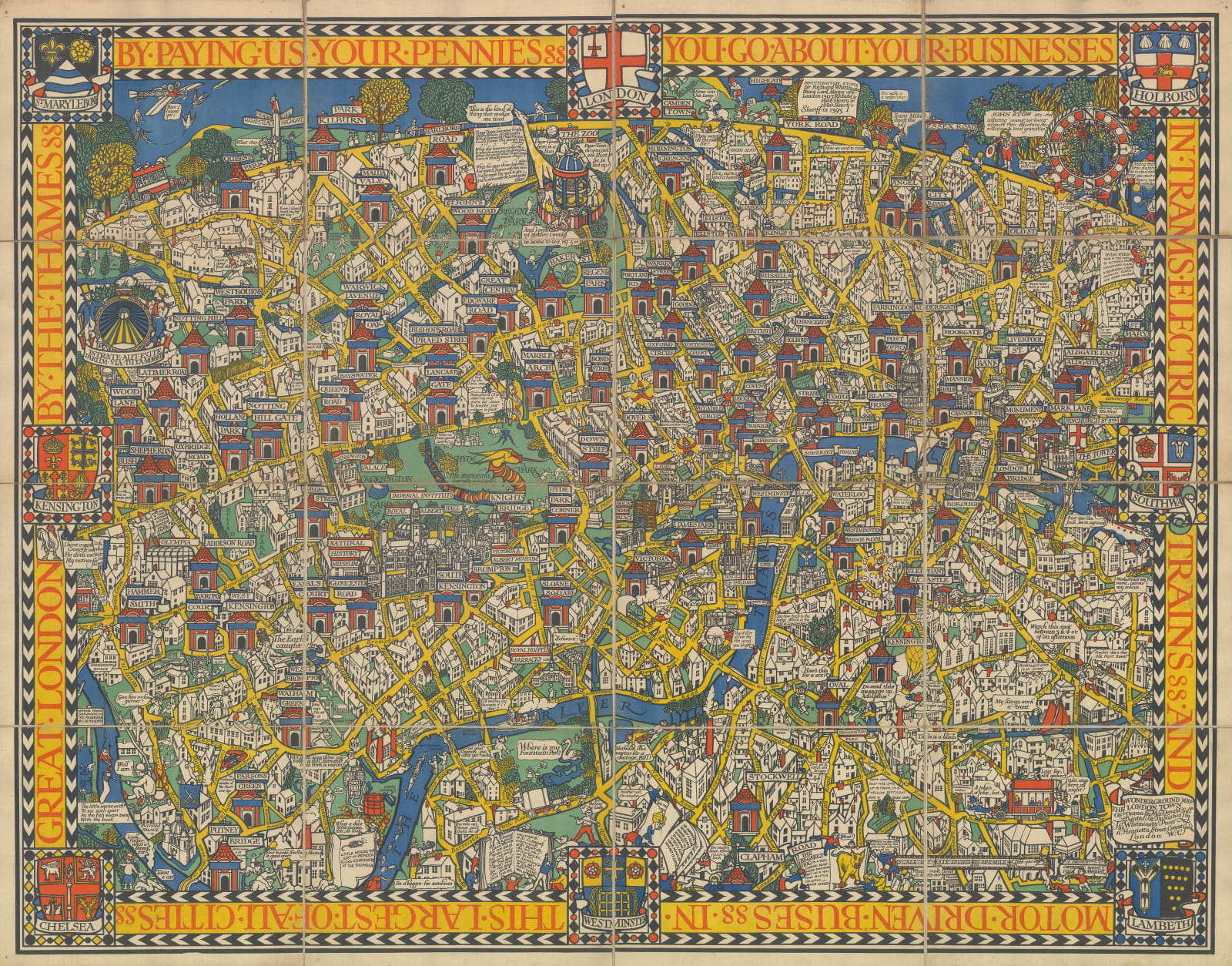MacDonald Gill
100 x 127 cm
First edition of Macdonald Gill's celebrated and much-beloved 'Wonderground Map of London Town'. This larger, folding edition was published for display by London Underground, not for commercial sale, making it much rarer than the later editions. Published in 1914 by Gerard T. Meynell, whose name appears in the bottom right corner, this map played a pivotal role in the rebranding of the London Underground from a transporter of workers to a recreational highway, showing Londoners the sights and sounds of their thrilling modern city.
In the early 20th century, the London Underground was losing money and lacked public popularity, due to complaints of overcrowding, uncleanliness, and tardiness. Frank Pick, the Publicity Manager for the Underground Electric Railways of London, wanted a new artistic take on rail advertising; some flashy, energetic art to rejuvenate the railway’s reputation and encourage Londoners to associate the Underground with access to leisure activities around the city. Arts and Crafts artist Eric Gill had helped design the typeface for the Underground branding, and he reached out to his brother Max, a fellow artist and designer, to plan a creative and interesting map showcasing the Underground. The result was Max Gill’s so-called ‘Wonderground Map of London Town,’ a vibrant and humorous pictorial map of the city.
The map features central London as a walled medieval city, intersected by bold yellow roads, white cartoonish neighbourhood buildings, and Medieval Tube stations in vivid red and blue. Gill frames the map in a black and white chevron border, with a slogan promoting the Underground written on a wide yellow ribbon:
"By paying us your pennies, you go about your businesses, in Trams, Electric Trains, and Motor-Driven Buses, in this largest of all cities, Great London by the Thames."
Cartoon renditions of middle- and working-class Londoners populate the map, going about their daily business and recreational activities, often with a humorous twist. Many of the characters, including animals, are given speech bubbles of witty humour, topical references, and familiar nursery rhymes.
Gill’s medieval inspiration was not limited to the layout of the city but is also reflected in the typography and the eight coats of arms he placed on along the borders, as well as his use of bright primary colours. The map’s bold palette, whimsical design, and surreal humour invite comparison to the popular world of Alice in Wonderland, giving the map its nickname of the ‘Wonderground Map of London.’ Gill spent seven months completing the map, even working late into the night on his final day to finish colouring it on time.
Despite the initial impression of a crowded and hectic city, the map expertly employs geographically accurate depictions of London’s important roads and prominent landmarks, proving its usefulness as a guide, as well as its entertainment value. Indeed, when it was first put up in Tube stations in 1914, it became an instant sensation with the public. Londoners found the map personal and informative, a map of the city meant for its own citizens. It was reported that travellers spent so long looking and enjoying the map that many missed their trains.
The immediate success of the map prompted the publication of a folding version and various ‘Wonder’-inspired maps for other cities all over the world. Because of its popularity, the Wonderground map became the first London underground poster sold commercially, and it continues to be available today. It is also credited with rescuing the Tube from failure as a public transport venture. The map, as well as Gill’s other design work was enormously influential in the following decades, greatly inspiring the artists involved in the Golden Age of Pictorial Mapmaking in the 1920s and 1930s.
Leslie MacDonald (Max) Gill (1884-1947) was a calligrapher, architect, muralist, and graphic poster designer. The ‘Wonderground’ map was a pivotal moment in Gill’s career, and he consistently became associated with this pictorial style of map. In addition to his many other commissions with the London Underground, he was also known for his work with designing military headstones for the Imperial War Graves Commission Headstone Committee, and commissions with the General Post Office, Imperial Airways, and the Ministry of Information.
Printed colour. Folded. [LDN6960]


